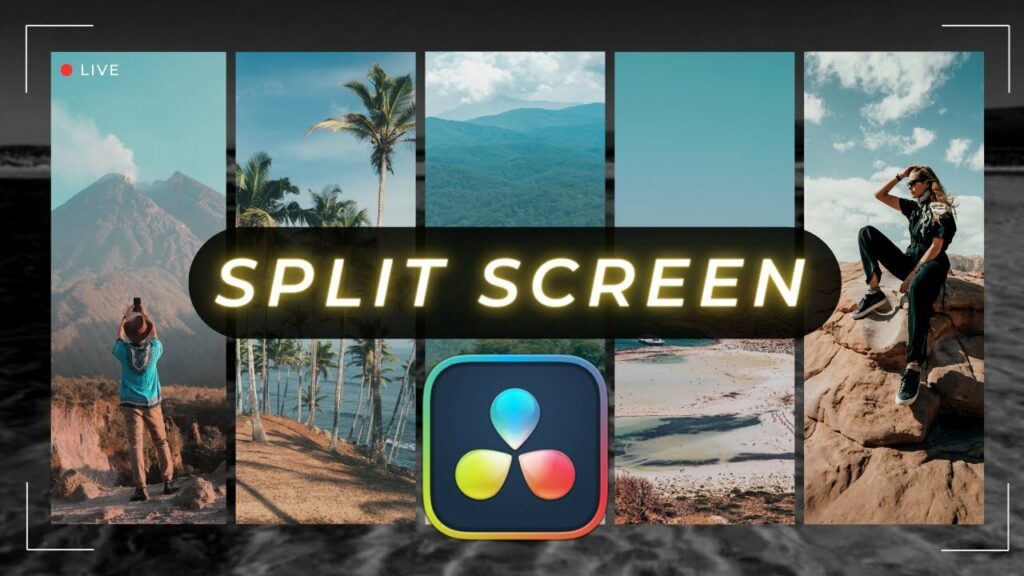Mastering Split Screen Effects in DaVinci Resolve: A Comprehensive Guide to Creative Visual Storytelling
James April 19, 2024
Introduction: In the realm of video editing, split screen effects stand as powerful tools for conveying multiple narratives simultaneously, enhancing visual storytelling, and engaging audiences in unique ways. DaVinci Resolve offers a robust set of features and functionalities for creating split screen effects with precision and finesse. In this extensive guide, we embark on a comprehensive journey through the intricacies of creating split screen effects in DaVinci Resolve, empowering editors to unlock their creativity and elevate their storytelling prowess.
Section 1: Understanding Split Screen Effects Before delving into the specifics of creating split screen effects, it’s essential to grasp the concept and purpose behind this technique. This section provides an overview of split screen effects, including their definition, historical context, and creative applications in video editing and filmmaking.
- Defining split screen effects: Explore the concept of split screen effects, which involve dividing the screen into multiple sections to display different video clips simultaneously. Understand how split screen effects can be used to convey parallel narratives, juxtapose contrasting perspectives, and enhance visual engagement and storytelling.
- Analyzing the creative potential of split screen effects: Delve into the creative applications of split screen effects in video editing and filmmaking. Discover how split screen effects can be used to emphasize relationships between characters, illustrate cause-and-effect relationships, and create dynamic visual compositions that captivate and engage audiences.
Section 2: Creating Split Screen Effects in DaVinci Resolve DaVinci Resolve offers a variety of tools and techniques for creating split screen effects, allowing editors to customize and control every aspect of their compositions. This section provides step-by-step tutorials and demonstrations for creating split screen effects using DaVinci Resolve’s powerful editing and compositing tools.
- Basic split screen setups: Learn how to create basic split screen effects in DaVinci Resolve by arranging multiple video clips within a single frame. Explore techniques for resizing, positioning, and cropping video clips to create visually balanced split screen compositions, and customize layouts to suit the narrative and aesthetic requirements of your project.
- Advanced split screen configurations: Dive deeper into the creative possibilities of split screen effects by exploring advanced configurations and techniques in DaVinci Resolve. Discover how to create dynamic split screen layouts with varying aspect ratios, overlay graphics, and animated transitions, and experiment with blending modes, opacity adjustments, and color grading effects to achieve the desired visual impact.
Section 3: Enhancing Split Screen Effects with Transitions and Effects Transitions and effects play a crucial role in enhancing the visual impact and narrative flow of split screen compositions. This section explores techniques for incorporating transitions and effects into split screen effects in DaVinci Resolve, elevating the overall quality and professionalism of your compositions.
- Adding transitions between split screen segments: Learn how to use transitions to seamlessly transition between different segments of a split screen composition. Explore techniques for applying cross dissolves, wipes, and other transition effects to create smooth and visually appealing transitions that enhance narrative coherence and visual engagement.
- Applying effects to individual split screen segments: Discover how to apply effects and adjustments to individual segments of a split screen composition to enhance their visual impact and storytelling effectiveness. Learn how to apply color grading, visual effects, and stylistic treatments to individual segments, and experiment with blending modes and opacity adjustments to achieve the desired aesthetic and mood.
Section 4: Real-World Applications and Case Studies Gain inspiration and insight from real-world examples and case studies that demonstrate the creative potential and practical applications of split screen effects in DaVinci Resolve. This section showcases innovative split screen techniques employed in diverse contexts, from narrative films and documentaries to commercials and music videos.
- Narrative filmmaking: Explore how filmmakers use split screen effects in DaVinci Resolve to convey parallel narratives, illustrate character relationships, and enhance visual storytelling in narrative films. Discover techniques for creating split screen sequences that amplify dramatic tension, convey emotional depth, and captivate audiences with dynamic visual storytelling.
- Documentary filmmaking: Experience the versatility of split screen effects in documentary filmmaking, where visual clarity and narrative coherence are paramount. Explore techniques for juxtaposing multiple perspectives, highlighting key moments, and conveying complex information in a visually engaging and accessible manner through split screen compositions.
- Commercial advertising: Discover how advertisers leverage split screen effects in DaVinci Resolve to create dynamic and impactful visuals for commercials and marketing campaigns. Learn how to use split screen compositions to showcase multiple products or features simultaneously, convey brand messaging effectively, and captivate viewers with visually compelling storytelling.
Section 5: Conclusion Split screen effects in DaVinci Resolve represent a versatile and powerful tool for enhancing visual storytelling and engaging audiences in unique and immersive ways. By mastering the techniques and principles outlined in this guide, editors can unlock a world of creative possibilities and elevate their storytelling prowess to new heights of excellence. Embrace the creative potential of split screen effects, and let DaVinci Resolve be your canvas for bringing your vision to life with clarity, impact, and artistic expression.




